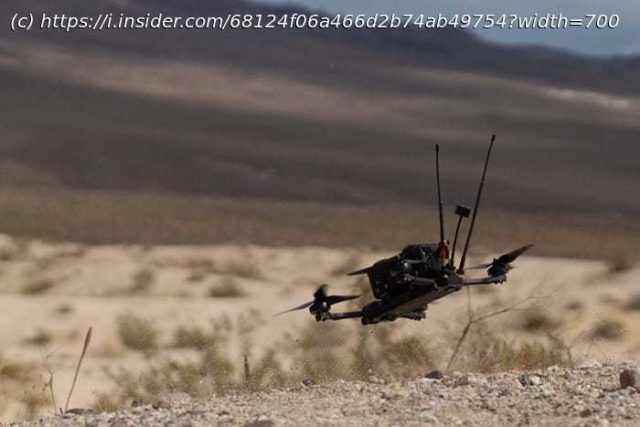Drones are critical warfighting tools, from the big ones down to the quadcopters, but the Marine Corps isn’t fielding them fast enough.
Some Marine leaders are eager to see a major cultural shift when it comes to drones, saying old mindsets and acquisition processes are what’s holding back the Corps from going all in on this technology.
„It’s not enough“, Col. Sean Hoewing, the director of the Capabilities Development Directorate’s Aviation Combat Element, said of the speed at which the Corps is adopting drone technology.
„It’s nowhere near where it needs to be“, he said on Tuesday at the Modern Day Marine symposium in Washington, DC.
Marine Corps leaders at the symposium are taking drones seriously, with a palpable sense of urgency. But the service, and the rest of the Defense Department, are still struggling to break free of a cumbersome acquisitions process that has proliferated over the last two decades.
„Our acquisition system is designed to reduce acquisition risk to zero“, said Lt. Gen. Benjamin Watson, who oversees the Marine Corps‘ Training and Education Command, acknowledging the challenges in policy and regulation.
A service’s tightly controlled budget can contribute to an environment in which sometimes perfect becomes the enemy of good, he said. And in the Corps‘ quest to spend dollars judiciously (its the only service to have passed a Pentagon audit), it can foster an unwillingness to take risks like rapidly and widely fielding technology like drones.
„We’ve got to field drones at scale in order to be able to pressurize our training really, to work through some of the real hard problems“, Watson said, adding that he expects to see the Marine Corps fielding drones and loitering munitions more broadly over the next year.The ‚Valley of Death‘
The war in Ukraine has seriously highlighted the value of employing small uncrewed aerial systems like quadcopter drones at scale, down to the squad level.






